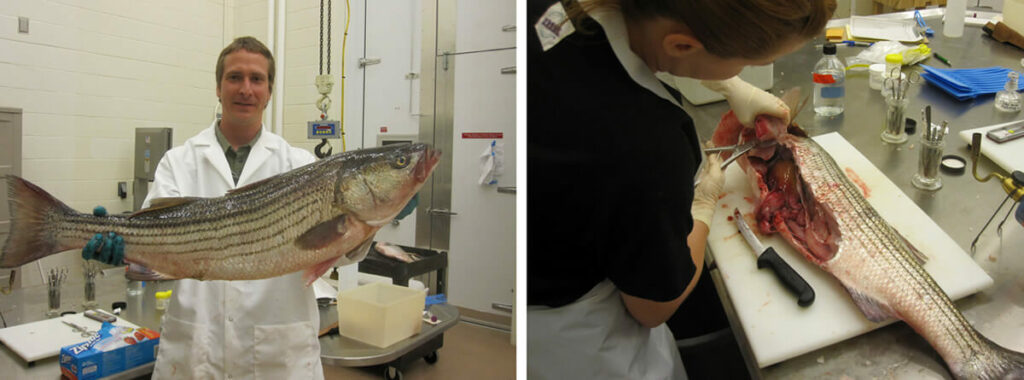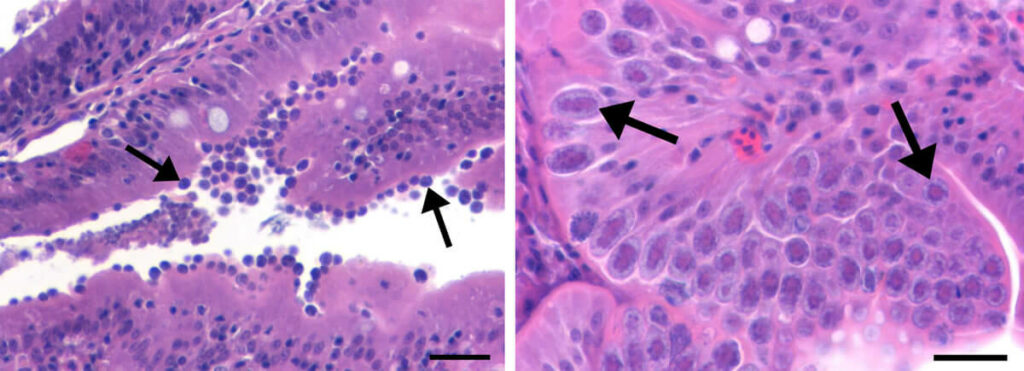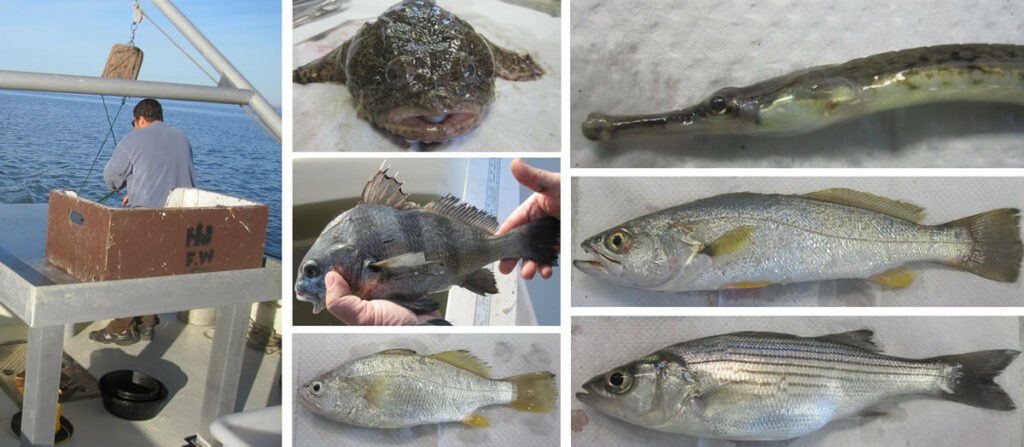Wild Fish Health Surveillance
Disease is a known contributor to population level declines in wild fish. In wild fish populations we sample live fish to determine prevalence of pathogens/diseases in order to understand the potential impacts of diseases in fish from NJ waters. In addition to this, fish kills are investigated to understand the causes of mortality.
The collection of fish from the wild is done in conjunction with freshwater fisheries biologists, who conduct projects to understand and manage freshwater fish populations as well as with marine fisheries biologists collecting data on saltwater species. Through these programs fish are collected from the wild using various methods, including trapping and electrofishing in freshwater, and for marine fish, trawling. Representative samples are collected from various species for analysis in the laboratory.
Marine Fish Health Study
We work with biologists in the Bureau of Marine Fisheries to collect a variety of marine fish species from the Delaware Bay Trawl Survey, the Delaware River Seine Survey, and the Ocean Trawl Survey
The goal of this project is to understand infectious diseases present in marine finfish. A viral disease that has had an impact on wild fish (freshwater and saltwater) throughout the northern hemisphere is viral hemorrhagic septicemia (VHS), caused by an RNA rhabdovirus. This virus is not known to be present in New Jersey, although with its isolations in close proximity to the state, we are screening fish known to be susceptible to this virus.
Mycobacteriosis is a bacterial disease in striped bass, which is known to be present in New Jersey. Clinical disease signs include the presence of granulomas (appear as white cysts) throughout the internal organs and/or hemorrhage and ulcerations on the skin of the fish. An ongoing mycobacteriosis epizootic has been occurring in Chesapeake Bay and there is concern that this disease is affecting the population, with adult fish often showing clinical disease signs. We are collecting striped bass in New Jersey to determine the prevalence of this bacterial disease and we are collaborating with Virginia Institute of Marine Science and Dr. David Gauthier of Old Dominion University to see how the prevalence of Mycobacteria sp in New Jersey compares to other geographical regions. Click to learn more about mycobacteriosis.
Another ongoing project is to learn more about coccidian parasite infections in the intestinal tract of several marine fish species. With the high prevalence of these parasites in juvenile fish and the associated damage to the intestinal tract, we would like to learn more about these parasites and determine if they cause natural mortality in these fish populations. These coccidian parasites do not pose any danger to human health. See the histological micrograph below to see these parasites in the intestinal tract of fish.


 Official Site of The State of New Jersey
Official Site of The State of New Jersey

